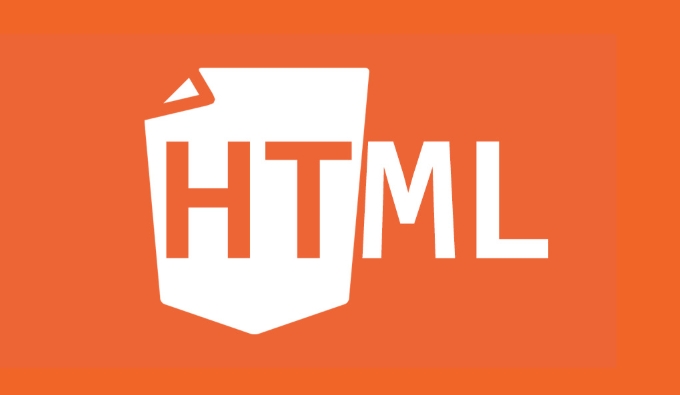IndexedDB is a NoSQL database built in browsers that supports storing large amounts of structured data and implementing offline synchronization. 1. It stores data in the form of key-value pairs, supporting transactions, indexes and asynchronous operations; 2. Core concepts include databases, object warehouses, indexes and transactions; 3. Offline synchronization process includes local temporary storage of changes, listening to network status, and uploading data after recovery; 4. Notes include version control, asynchronous processing, compatibility and storage restrictions; 5. Conflict resolution can be done by timestamps, version numbers or manual intervention.

IndexedDB is a very practical browser built-in database choice when doing offline synchronization solutions. It can store structured data and support transaction operations, which is suitable for scenarios that require persistence and large amounts of local data processing.

What is IndexedDB?
IndexedDB is a browser-side NoSQL database system that allows you to store and retrieve key-value pair data. Compared with localStorage, its advantage is that it can store more complex data types (such as objects and arrays), and also supports index query and asynchronous operations, which will not block page rendering.
There are several core concepts to understand when using IndexedDB:

- Database : Each application can have one or more databases.
- Object Store : Similar to a table, used to store data records.
- Index (Index) : Indexes certain fields in the object repository for quick search.
- Transaction : All read and write operations must be performed in a transaction.
How to design offline synchronization logic?
When doing offline synchronization, the usual idea is to first store the data locally and then upload it to the server after the network is restored. The role of IndexedDB here is to act as a temporary storage layer.
The basic steps to implement this process are as follows:

- User operations trigger data changes (such as adding, modifying, deleting)
- Staging these changes to IndexedDB
- Listen to network status changes. When a network connection is detected, extract data to be synchronized from IndexedDB
- Send to the server, mark it as synchronized or deleted after success
This mechanism is commonly found in mobile applications, CRM systems or form submission products, and is particularly useful in environments where signal is unstable or frequent disconnection of the network.
Notes on using IndexedDB
Although IndexedDB is powerful, there are some easy places to get stuck in actual use:
- Version control is important: When you need to update the database structure, you must upgrade the version number to open a new version and modify the object repository structure.
- Asynchronous operations need to handle callbacks or Promise chains: IndexedDB All operations are asynchronous, and it is recommended to encapsulate them as promises and make them more convenient to use.
- The browser compatibility is overall good, but some older versions still need to pay attention to support.
- Storage space is not unlimited, and different browsers have different restrictions. After it exceeds it, it will trigger a request for user authorization to expand capacity.
For example, if you are developing a notepad application and the user has written content but is not connected to the Internet, you should save the notes in IndexedDB first. After the network is restored, then traverse the unsynced data items and upload them one by one.
How to deal with synchronization conflicts?
Data saved in offline state may have conflict problems when synchronizing again. For example, User A and User B modify the same record at the same time, a conflict resolution mechanism is needed.
Common practices include:
- Timestamp priority: the last modified time shall prevail
- Version number comparison: record the version number of each modified, select the latest version when conflicts
- Manual intervention: prompts the user to choose which version to retain
It is best to have a verification mechanism on the server side, and the front-end only makes preliminary judgments to avoid repeated submissions or overwriting of data.
Basically that's it. Using IndexedDB well can make your web applications have stronger offline capabilities. Although it is a bit troublesome to build in the early stage, it is not too complicated to maintain it once it is completed.
The above is the detailed content of H5 IndexedDB for Offline Synchronization Solutions. For more information, please follow other related articles on the PHP Chinese website!

Hot AI Tools

Undress AI Tool
Undress images for free

Undresser.AI Undress
AI-powered app for creating realistic nude photos

AI Clothes Remover
Online AI tool for removing clothes from photos.

Clothoff.io
AI clothes remover

Video Face Swap
Swap faces in any video effortlessly with our completely free AI face swap tool!

Hot Article

Hot Tools

Notepad++7.3.1
Easy-to-use and free code editor

SublimeText3 Chinese version
Chinese version, very easy to use

Zend Studio 13.0.1
Powerful PHP integrated development environment

Dreamweaver CS6
Visual web development tools

SublimeText3 Mac version
God-level code editing software (SublimeText3)
 Using ARIA attributes with HTML5 semantic elements for accessibility
Jul 07, 2025 am 02:54 AM
Using ARIA attributes with HTML5 semantic elements for accessibility
Jul 07, 2025 am 02:54 AM
The reason why ARIA and HTML5 semantic tags are needed is that although HTML5 semantic elements have accessibility meanings, ARIA can supplement semantics and enhance auxiliary technology recognition capabilities. For example, when legacy browsers lack support, components without native tags (such as modal boxes), and state updates need to be dynamically updated, ARIA provides finer granular control. HTML5 elements such as nav, main, aside correspond to ARIArole by default, and do not need to be added manually unless the default behavior needs to be overridden. The situations where ARIA should be added include: 1. Supplement the missing status information, such as using aria-expanded to represent the button expansion/collapse status; 2. Add semantic roles to non-semantic tags, such as using div role to implement tabs and match them
 Integrating CSS and JavaScript effectively with HTML5 structure.
Jul 12, 2025 am 03:01 AM
Integrating CSS and JavaScript effectively with HTML5 structure.
Jul 12, 2025 am 03:01 AM
HTML5, CSS and JavaScript should be efficiently combined with semantic tags, reasonable loading order and decoupling design. 1. Use HTML5 semantic tags, such as improving structural clarity and maintainability, which is conducive to SEO and barrier-free access; 2. CSS should be placed in, use external files and split by module to avoid inline styles and delayed loading problems; 3. JavaScript is recommended to be introduced in front, and use defer or async to load asynchronously to avoid blocking rendering; 4. Reduce strong dependence between the three, drive behavior through data-* attributes and class name control status, and improve collaboration efficiency through unified naming specifications. These methods can effectively optimize page performance and collaborate with teams.
 HTML5 video not playing in Chrome
Jul 10, 2025 am 11:20 AM
HTML5 video not playing in Chrome
Jul 10, 2025 am 11:20 AM
Common reasons why HTML5 videos don't play in Chrome include format compatibility, autoplay policy, path or MIME type errors, and browser extension interference. 1. Videos should be given priority to using MP4 (H.264) format, or provide multiple tags to adapt to different browsers; 2. Automatic playback requires adding muted attributes or triggering .play() with JavaScript after user interaction; 3. Check whether the file path is correct and ensure that the server is configured with the correct MIME type. Local testing is recommended to use a development server; 4. Ad blocking plug-in or privacy mode may prevent loading, so you can try to disable the plug-in, replace the traceless window or update the browser version to solve the problem.
 Embedding video content using the HTML5 `` tag.
Jul 07, 2025 am 02:47 AM
Embedding video content using the HTML5 `` tag.
Jul 07, 2025 am 02:47 AM
Embed web videos using HTML5 tags, supports multi-format compatibility, custom controls and responsive design. 1. Basic usage: add tags and set src and controls attributes to realize playback functions; 2. Support multi-formats: introduce different formats such as MP4, WebM, Ogg, etc. through tags to improve browser compatibility; 3. Custom appearance and behavior: hide default controls and implement style adjustment and interactive logic through CSS and JavaScript; 4. Pay attention to details: Set muted and autoplay to achieve automatic playback, use preload to control loading strategies, combine width and max-width to achieve responsive layout, and use add subtitles to enhance accessibility.
 Using HTML5 Semantic Elements for Page Structure
Jul 07, 2025 am 02:53 AM
Using HTML5 Semantic Elements for Page Structure
Jul 07, 2025 am 02:53 AM
Using HTML5 semantic tags can improve web structure clarity, accessibility and SEO effects. 1. Semantic tags such as,,,, and make it easier for the machine to understand the page content; 2. Each tag has a clear purpose: used in the top area, wrap navigation links, include core content, display independent articles, group relevant content, place sidebars, and display bottom information; 3. Avoid abuse when using it, ensure that only one per page, avoid excessive nesting, reasonable use and in blocks. Mastering these key points can make the web page structure more standardized and practical.
 Explaining the HTML5 `` vs `` elements.
Jul 12, 2025 am 03:09 AM
Explaining the HTML5 `` vs `` elements.
Jul 12, 2025 am 03:09 AM
It is a block-level element, suitable for layout; it is an inline element, suitable for wrapping text content. 1. Exclusively occupy a line, width, height and margins can be set, which are often used in structural layout; 2. No line breaks, the size is determined by the content, and is suitable for local text styles or dynamic operations; 3. When choosing, it should be judged based on whether the content needs independent space; 4. It cannot be nested and is not suitable for layout; 5. Priority is given to the use of semantic labels to improve structural clarity and accessibility.
 Accessing User Location with HTML5 Geolocation API
Jul 07, 2025 am 02:49 AM
Accessing User Location with HTML5 Geolocation API
Jul 07, 2025 am 02:49 AM
To obtain user location information, you must first obtain authorization. When using HTML5's GeolocationAPI, the first step is to request user permission. If the user refuses or fails to respond, an error should be handled and a prompt should be given; after successful authorization, the Position object includes coords (latitude, longitude, etc.) and timestamp; you can use watchPosition to monitor location changes, but you need to pay attention to performance issues and clear the listener in time. 1. Authorization requires the user to explicitly allow it to trigger the getCurrentPosition method request; 2. Process error.code when rejected or errored and prompt the user; 3. After success, position.coords provides location data; 4.watc
 Saving the content of an HTML5 canvas as an image.
Jul 08, 2025 am 02:13 AM
Saving the content of an HTML5 canvas as an image.
Jul 08, 2025 am 02:13 AM
Yes, you can save its contents as an image using the HTML5Canvas built-in toDataURL() method. First, call canvas.toDataURL ('image/png') to convert the canvas content to a base64 string in PNG format; if JPEG or WebP format is required, the corresponding type and quality parameters such as canvas.toDataURL ('image/jpeg', 0.8) can be passed in. Then you can achieve download by creating a dynamic link and triggering a click event: 1. Create an element a; 2. Set the download attribute and href as image data; 3. Call the click() method. Note that this operation should be triggered by user interaction.






